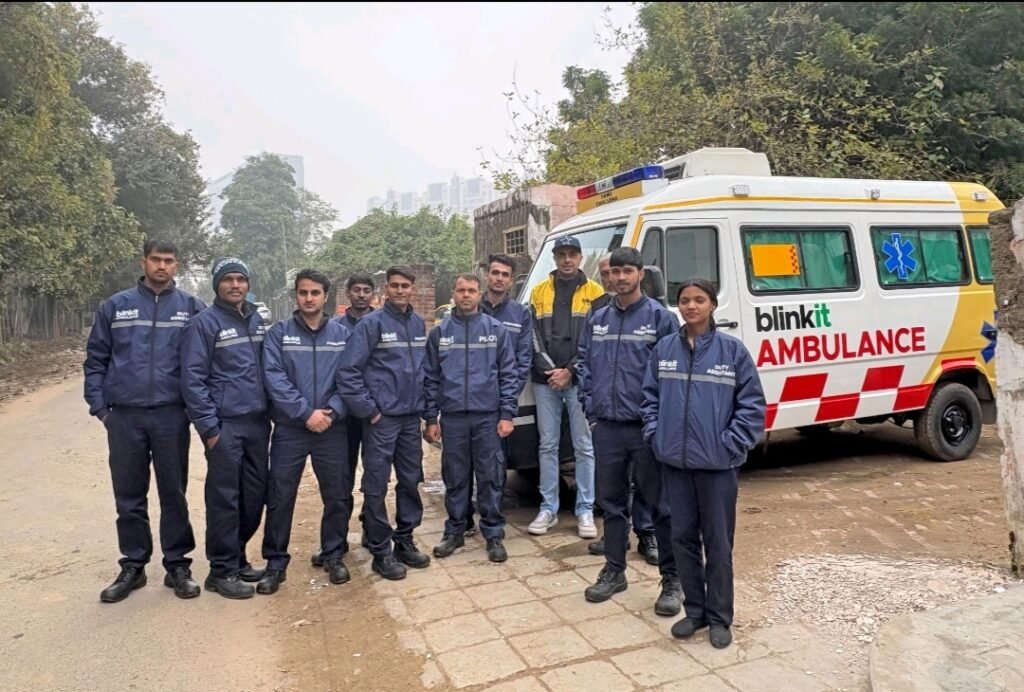The announcement of Blinkit’s ambulance service marks a bold step into the healthcare sector. With a mission to provide quick and reliable ambulance service, their pilot project in Gurugram introduces a promising solution to a critical issue. Here, we analyze the positive and negative impacts of this initiative and explore whether such ventures could eventually lead Blinkit, Zomato, and related companies into building their own hospitals.
Read Announcement by Albinder (Founder, BlinkIt)

Positive Impacts on Healthcare
1. Quick Access to Emergency Services
The promise of a 10-minute ambulance service is revolutionary in India, where delays often result in loss of life. By integrating this service into an app, Blinkit leverages its existing logistics expertise for life-saving purposes.
2. Enhanced Equipment Standards
The ambulances are equipped with essential life-saving tools, including oxygen cylinders, AEDs, and emergency medicines. This high standard ensures patients receive initial critical care during transit.
3. Trained Personnel
The presence of paramedics, assistants, and trained drivers ensures patients receive professional care, bridging the gap in quality emergency services.
4. Affordable and Non-Profit Approach
By prioritizing affordability over profit, Blinkit addresses accessibility, ensuring even low-income groups can benefit. This is a much-needed intervention in a cost-sensitive healthcare market.
5. Awareness and Sensitization
The initiative also aims to raise public awareness about making way for ambulances, a cultural shift that could save countless lives.
Negative Impacts and Challenges
1. Potential Overreliance on Tech
Relying on app-based bookings might exclude a significant population without smartphone access. This digital divide could create inequality in access to emergency services.
2. Operational Risks
Managing medical emergencies requires more than logistics expertise. Scaling up while maintaining quality and safety standards could be a significant challenge.
3. Regulatory Hurdles
The healthcare sector is heavily regulated. Ensuring compliance with medical, legal, and operational norms while expanding to other cities might delay implementation.
4. Competition with Established Providers
Existing ambulance services and hospitals might see Blinkit as a competitor, leading to resistance or pushback.
5. Financial Sustainability
Operating at an affordable cost while investing heavily in equipment and training might strain resources, especially without external funding.
Future Possibilities: Building Their Own Hospitals?
Given Blinkit’s foray into healthcare, it raises an interesting question—could they expand further to build their own hospitals? While it might seem far-fetched now, their expertise in logistics, customer service, and now emergency response could provide a strong foundation for:
- Chain Hospitals: Leveraging their infrastructure to establish multispecialty hospitals.
- Telemedicine Integration: Combining online consultations with quick ambulance services.
- Specialized Emergency Centers: Focusing on critical care facilities in underserved areas.
However, the challenges of entering the highly regulated and capital-intensive hospital industry are immense. Partnerships with established healthcare providers might be a more feasible route for long-term expansion.
Blinkit’s ambulance initiative is a commendable step toward addressing a critical gap in Indian healthcare. Its potential to save lives and set new benchmarks in emergency response cannot be overstated. However, scaling this model and maintaining quality will require meticulous planning, innovation, and collaboration.Whether this marks the beginning of a deeper involvement in healthcare, such as building hospitals, remains to be seen. For now, Blinkit has shown how tech-driven companies can think beyond profits to make a real difference in society.